

announcement
kurimanzutto创始人之一莫妮卡·曼祖托接受ArtAsiaPacific专访,谈kurimanzutto走过的历程、墨西哥城本部和纽约空间的关系,以及画廊创办至今始终如一的核心办展理念。
专访kurimanzutto创始人莫妮卡·曼祖托:
我们是非常规的思想激发者
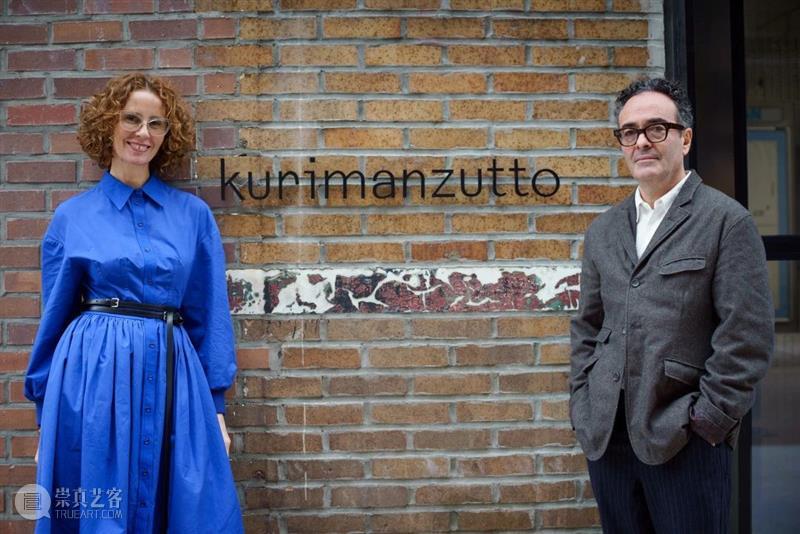
原文链接:https://artasiapacific.com/market/unconventional-instigator-of-ideas-interview-with-kurimanzutto
-
我们是以思想的激发者的立场,去提供一个平台,让艺术家来发展出他们自己的语言和词汇。
——莫妮卡·曼祖托
-
二十多年来一直处在墨西哥最前沿的实验艺术画廊kurimanzutto,于(2022年)11月在纽约切尔西区开设的全新空间,以画廊39位艺术家的群展“TODOS JUNTOS(一起)”揭开帷幕。ArtAsiaPacific采访了画廊的创始人之一莫妮卡·曼祖托,听她谈了谈kurimanzutto以艺术家为先的办展方式,以及kurimanzutto是如何看待他们在墨西哥的根,与他们工作于全球各地的艺术家网络之间的定位。
-
1999年,你所创想的画廊,是“没有空间的,呼应那个年代墨西哥艺术家们的自由精神”。你怎么看待这种“自由”和实验的精神在你们纽约新空间的发展呢?
kurimanzutto是由艺术家加布里埃尔·奥罗斯科所构想的,这一点是画廊最重要的基因之一。加布里埃尔来找我和我的伴侣何塞·库里之后,我们就把这个想法告诉了墨西哥一群当时都缺乏画廊代理的艺术家们。kurimanzutto最初建立时邀请的唯一一位国际艺术家是里克力·提拉瓦尼,他是加布里埃尔在纽约的一位老朋友。加布里埃尔当时还提了一个非常重要的想法,对画廊的形成至关重要:他建议kurimanzutto不要作为一个永久空间而存在,而应该成为一个积极呼应墨西哥国内外艺术家各种特定项目,形态随之适应演化的画廊。
有了这个核心原则之后,我们就把画廊开在了麦德林市场里,那是在罗马移民镇社区里的一个很热闹的市场。第一个项目是一场只持续了一天的展示,艺术家们用市场里找到的材料来创作他们的作品。里克力甚至在一处公用的炉灶上烹调食物。项目的名字是“Economía de Mercado”(市场经济)。策展人、藏家、我们的朋友们还有市场的老客人们,都能以比邻我们的展陈的卖花、卖水果、卖杂货的小摊子上货品的对应价格,来购买展览中的艺术品。从那之后的九年间,我们一直都在各种不同的地方,比如一家老电影院,一个地毯陈列厅,还有一个停车场,来展示艺术家们的场地特定项目。在我们看来,我们是以思想的激发者的立场,去提供一个平台,让艺术家来发展出他们自己的语言和词汇。
这种创造性的办展方式和高度适应性的精神一直伴随我们至今。哪怕我们今天已经在墨西哥城和纽约拥有了两座实体空间,但还是热切地致力于在实体画廊展厅的墙壁之外,实现非常规的项目。最重要的是,我们力求把画廊外项目的那种开放精神,也带到画廊空间内部的项目中来。
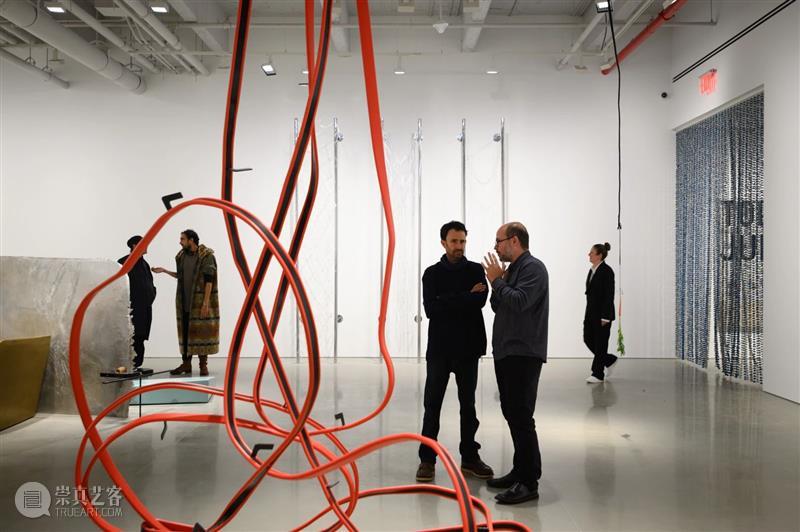
TODOS JUNTOS (all together)
New York, 2022
你们曾在纽约上东区有过一个规模比现在小的空间,也在2021年之前运营着“TITAN”广告牌项目,还有位于长岛东汉普顿的kurimanzutto out eat。这些项目的经历中有哪些东西,让你们想要在切尔西投入运营一个更大的画廊空间呢?
这些项目让我们开始在纽约投入更多的时间,并更深地参与进这座城市强劲的艺术社群之中。在和多位我们的艺术家讨论过之后,我们下定决心,现在是时候该对纽约这座城市,做出更大的、更有实质性的投入了。一想到可以把我们的努力,与纽约的未来记忆紧密地编织在一起,这个前景十分鼓舞我们。
在你们的设想中,切尔西的项目和墨西哥的本部项目之间,是如何相辅相成或相得益彰的呢?
kurimanzutto的墨西哥部分是我们一切工作最主要的根基和源泉,也是我们之所以成为一所画廊的理由。我们不把纽约空间看成一个分支,而是kurimanzutto为艺术家付出的服务的补充或延伸。纽约的画廊空间为他们提供了另一个探索和表现他们想法的机会。而与此同时,他们也可以在纽约接触到许多奇妙的机构和各个领域的思想者。
你们在墨西哥的空间中,进行的都是商业驱动较少、合作努力更多的项目,比如你们会接待很多国际艺术家和策展人。切尔西空间是否也会成为一个合作之所?
我们非常享受音乐、文学、电影、戏剧、舞蹈等各种艺术的相互融合、相互和哺育。在我们看来,我们是一个开放的位面,没有关于艺术或者画廊应该是什么样的定见。为了让本地和国际的策展人与藏家认识到我们艺术家们的独特实践,我们已经奉献了大量的时间和精力,所以也没有理由再现在改变我们的工作方式。

TODOS JUNTOS (all together)
New York, 2022
过去的这么多年来,你们所代理的艺术家群体已成规模,而且变得更像一个大家庭,你们也把这一点当成纽约空间开幕展的主题,“TODOS JUNTOS(一起)”。这个展览展出的作品,有很多都是来自于你们最早的一个展览,也就是前述1999年8月的“市场经济”。现在,你们在一座新的城市留下了足迹,你们觉得这个家庭是在阔步壮大,还是说,你们会继续关注现在代理的这个艺术家名册?
我们不觉得这是一个互斥的选择。纽约的空间将给我们全新的机会,把那些在美国曝光量有限的艺术家介绍给更多观众。同时,我们对这个新环境作出的回应也很重要。对这座城市的艺术社区作出贡献,就必须要与这里的艺术家们互动接触。
在外界看来,kurimanzutto有一个相当知名的点在于,你们代理了一个地理跨度相当广泛的艺术家群体,其中包括梁慧圭、傅丹、奥斯卡·穆里略、里克力·提拉瓦尼,还有许多墨西哥本土最具声誉的艺术家们。你们最重要的使命,是推广新兴的墨西哥艺术人才,还是已经与画廊初创时有所不同了?
我们是从墨西哥的艺术家起家的,因为那是我们最了解的环境,也是我们能够做出最大影响的环境。随着画廊的运行,我们开始理解,对新艺术家最好的推荐,一定来自于其他艺术家。因此,倾听我们的艺术家们就是我们生长的方式,就像丛茎或大树的枝桠一样。
我们不是有意朝某一个目标前进的,但有趣的是,回顾我们的来时路,我们合作的许多艺术家,他们的艺术的实践都是被西方正统的艺术传统所塑造的,但又出生于其他地方,比如出生于伊朗的奈里·巴格拉米扬,出生于黎巴嫩的塔里克·阿图伊,还有来自越南的傅丹。你会觉得墨西哥是西方正典的一部分吗?也许是这样,但这只是因为我们曾是西班牙的殖民地。可是,墨西哥在西班牙时代之前的思想之根和宇宙观,可能和东方的思想哲学有更深的渊源。
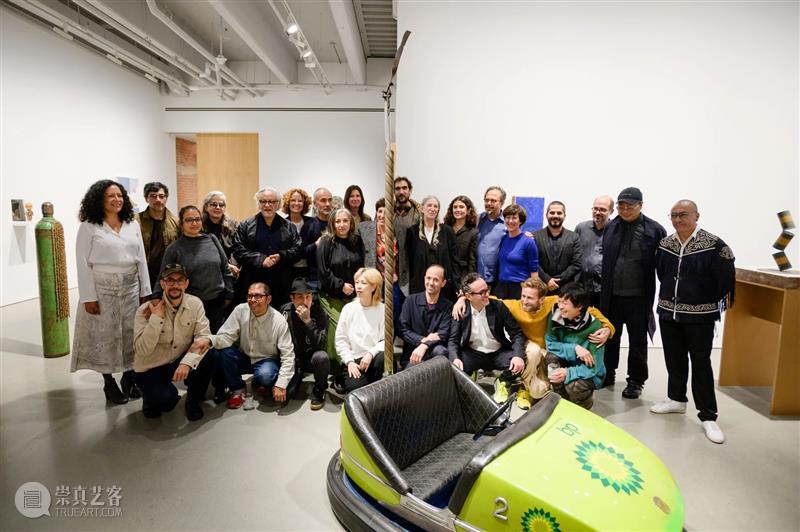
Founders, curators, and artists at the opening of TODOS JUNTOS (All Together)
kurimanzutto, New York, 2022.
虽然这个刚刚创立的新空间是画廊发展史的一个重要的里程碑,但你们未来是否有计划把目光投向更东的地方,比如亚洲?
kurimanzutto和亚洲的合作者网络建立的是一对一的关系。我们为这些合作投入了许多年的努力,尤其是最近的五年。此外,我们代理的艺术家在韩国、日本、泰国、中国大陆、香港、新加坡、台湾、印尼和菲律宾等国家和地区的机构、双年展和画廊所举办的展览中都很活跃。
我们也通过展览“Signals: If You Like I Shall Grow”和已故的大卫·梅达拉建立了亲密的合作关系。他是一位菲律宾艺术家,1960年代搬到了欧洲,曾经是那里的先锋艺术圈子的重要一员。他在当时帮助其他艺术家、思想家们共同经营着Signals画廊。
最近的合作,是片冈真实(森美术馆馆长)邀请我们代理的三位艺术家,罗曼·翁达克、莱昂诺尔·安图内斯和加布里埃尔·奥罗斯科参加2022年爱知三年展。而作为冈山艺术交流2022的艺术总监,里克力·提拉瓦尼邀请了芭芭拉·桑切斯–卡内、梁慧圭、阿夫拉姆·克鲁斯比列加斯和大卫·梅达拉参与。
2023年,你期待哪些你们艺术家的创作项目呢?在你们自己的画廊空间中举办的或是在其他地方的都可以。
我们墨西哥空间的开年展览是奈里·巴格拉米扬的个展,这个主要是基于她目前在达拉斯那舍尔雕塑中心的展览。在她的展览之后,我们会展出保丽娜·奥洛夫斯卡的雕塑和绘画作品。纽约空间的第一个个展是密涅瓦·奎瓦斯的,接下来是阿夫拉姆·克鲁斯比列加斯,以及之后的卡洛斯·阿莫拉莱斯的展览。2023年我们的艺术家也会参与很多让人激动的美术馆展览:梁慧圭会在圣保罗Pinacoteca美术馆展出,加布里埃尔·库里将会在墨西哥城的Jumex Museo展出。达米安·奥尔特加获颁2023苏黎世艺术奖,所以年底他会在Haus Konstruktiv美术馆举办个展。
采访:莫妮卡·费尔南德斯,ArtAsiaPacific编辑实习生
-
感谢ArtAsiaPacific及副主编H.G. Masters先生惠允我们翻译转载本文。
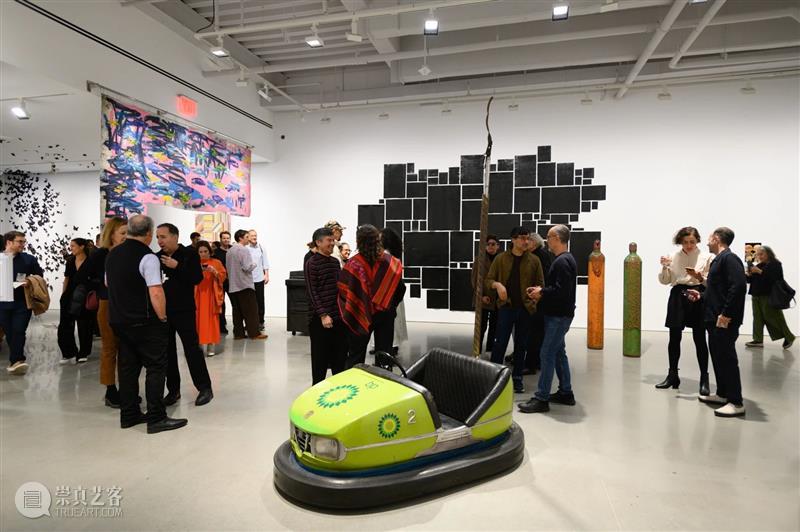
TODOS JUNTOS (all together)
New York, 2022
Unconventional Instigator of Ideas: Interview with kurimanzutto
The leading experimental art gallery in Mexico for more than two decades, kurimanzutto opened its new home in the Chelsea neighborhood of New York in November with a group exhibition of 39 artists, “TODOS JUNTOS (All Together).” ArtAsiaPacific spoke with co-founder Mónica Manzutto about the gallery’s artist-first approach to making exhibitions and how the gallery sees its position between its roots in Mexico and network of artists working around the world.
-
In 1999, you envisioned a gallery “with no space that responds to the freedom artists had at the time in Mexico.” How do you see this spirit of “freedom” and experimentation developing in your new neighborhood in New York?
One of the most relevant aspects of kurimanzutto is that it was conceived by an artist, Gabriel Orozco. After Gabriel approached my partner, José Kuri, and I, we then opened up the idea to a very specific group of Mexican artists in Mexico who did not have gallery representation at that time. The only international artist invited from the very beginning was Rirkrit Tiravanija, who was a long time friend of Gabriel in New York. Gabriel made another important proposal that was crucial to the formation of the gallery; he proposed that instead of establishing a permanent space, kurimanzutto should function as a gallery that responds to specific projects in Mexico and abroad.
With this core principle we opened the gallery in the Mercado de Medellin, a popular market in the Colonia Roma neighborhood. It was a one-day presentation in which the artists made works using materials from the market. Rirkrit cooked in one of the communal kitchens there as well. The project was called “Economía de Mercado” (Market Economy). Curators, collectors, friends, and the market’s usual visitors were all able to acquire the works at prices that corresponded to the products on sale in the neighboring stalls, which were selling flowers, fruit, and groceries. For the next nine years after that we continued presenting site-specific projects by our artists in venues that included an old movie theater, a carpet showroom, and a parking lot. We saw ourselves as instigators of ideas, as a platform where artists could develop their own language and vocabulary.
This creative approach to exhibition-making and adaptable spirit has been with us ever since. Even with two brick-and-mortar locations in Mexico City and New York we are still keen to realize unconventional projects outside the galleries’ walls. Most importantly, we aim to transmit that same spirit of openness to the projects that happen inside of them as well.
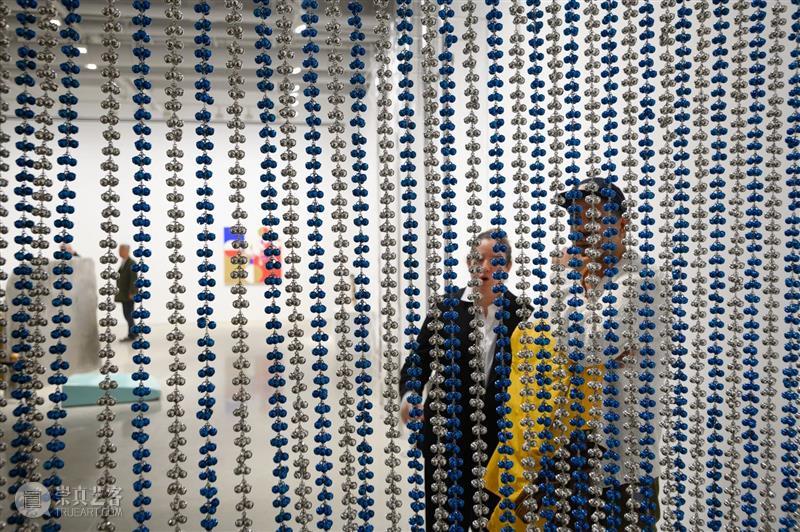
TODOS JUNTOS (all together)
New York, 2022
You had a smaller New York space on the Upper East Side and also ran the TITAN Billboards project until 2021, and Kurimanzutto Out East is located in East Hampton, Long Island. What about those projects made you want commit to a larger gallery space in Chelsea?
With those initiatives we started to spend increasingly more time in New York and became even more involved in the city’s robust community. After discussions with many of our artists we decided it was the right time to make a more substantial commitment to the city. The prospect of weaving what we do into the future memory of New York is highly motivating to us.
How do you envision the program in Chelsea complementing or building on the program at your home base in Mexico City?
Kurimanzutto Mexico is the primary source of everything we do and the reason we exist as a gallery. We see New York not as a branch but as a complement or extension to the work we do for the artists. The New York gallery provides them with yet another opportunity to explore and manifest their ideas. Being in New York gives us access to so many fantastic institutions and thinkers in every field.
Just as with your Mexico space, where you undertook less commercially driven, more collaborative efforts such as hosting international artists and curators, will your Chelsea space also serve as site of collaboration?
We enjoy the cross-fertilization of music, literature, film, theater, dance, etc. We think about what we do as an open plane with no fixed notions of what art or a gallery should be. We have dedicated a great deal of time in educating and sharing our artists’ practices to local and international curators and collectors and have no plans to change our way of working now.
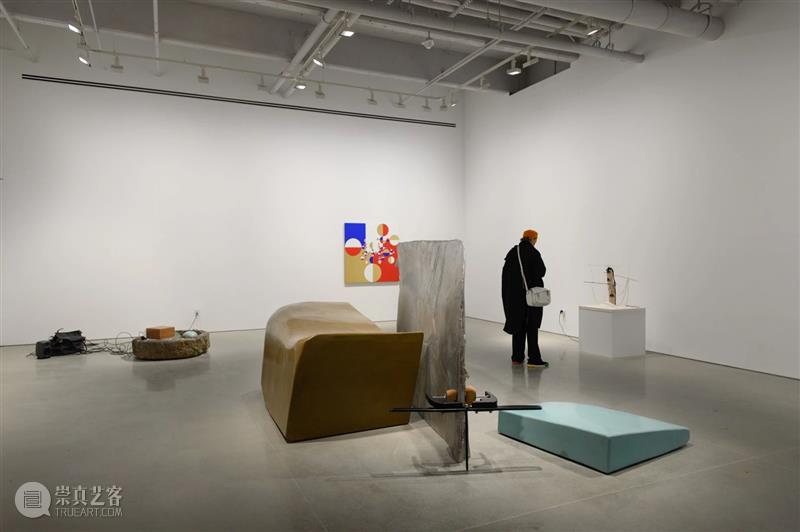
TODOS JUNTOS (all together)
New York, 2022
Over the years, you’ve built a roster of artists that has grown to more closely resemble a family, even taking this as the theme of the inaugural show, “TODOS JUNTOS (All Together),” which featured works from your very first exhibition, “Market Economy,” in August 1999. Do you see this family growing significantly now that you have a footprint in a new city, or will you continue to focus on your existing roster?
We don’t believe it necessarily has to be one or the other. The New York gallery will give us an opportunity to introduce those artists who have had limited exposure in the United States to broader audiences. At the same time, it is also important that we respond to this new context. Contributing to the city’s community entails engaging with its artists too.
Kurimanzutto has established a reputation as a gallery with a geographically diverse roster of artists including Haegue Yang, Danh Vo, Oscar Murillo, and Rirkrit Tiravanija, alongside many leading artists from Mexico. Do you see your primary commitment as promoting emerging Mexican artistic talent or has it shifted since the gallery’s inception?
We started with artists from Mexico, as it was the context we best understood and could be the most impactful in. Then we understood that the best recommendations for new artists we could receive came from other artists. So, listening to our artists is how we have grown, like a rhizome, or the branches of a tree.
It was never done consciously, but it is interesting to look back and see that many of the artists we work with have practices shaped within the Western canon but who were born or come from other latitudes—Nairy Baghramian is from Iran, Tarek Atoui from Lebanon, Danh Vo from Vietnam. Would you consider Mexico part of the Western canon? Probably, just because we were a Spanish colony, but the roots and cosmogony of our pre-Hispanic world might have more connections with Eastern ideas or philosophies.
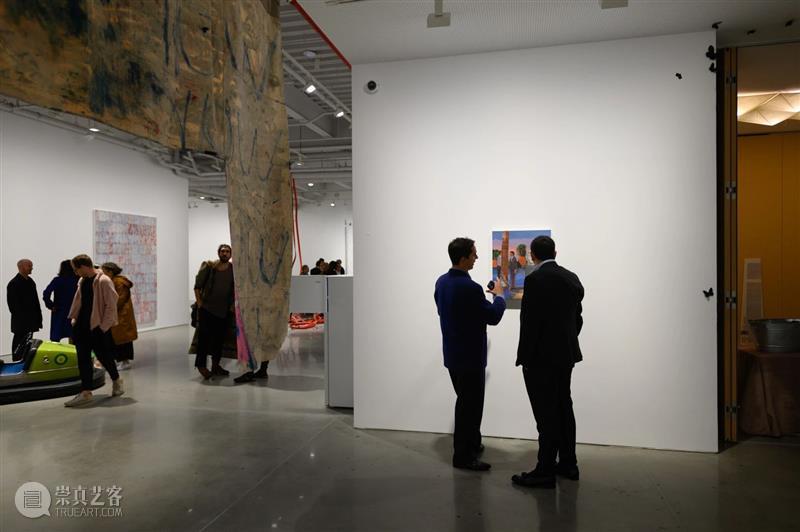
TODOS JUNTOS (all together)
New York, 2022
Though you’ve just hit a milestone in the gallery’s history by opening this space in Chelsea, are there any plans in the future to look further East, to Asia?
Kurimanzutto relates to Asia through one-to-one relationships with our network of collaborators there. This is something we have invested in for many years, though more intensely in the last five. Additionally, our artists have been active in Asia through many solo exhibitions in institutions, biennales and galleries, including Korea, Japan, Thailand, China, Hong Kong, Singapore, Taiwan, Indonesia, and the Philippines.
We also fostered a very intimate relationship with the late David Medalla through the exhibition “Signals: If You Like I Shall Grow” that we staged in 2018. A Filipino artist who moved to Europe in the 1960s and was a part of the avant-garde community there, he helped to co-run Signals Gallery alongside other artists and thinkers of the time.
More recently, [Mori Art Museum director] Mami Kataoka invited Roman Ondak, Leonor Antunes, and Gabriel Orozco to the Aichi Triennale 2022. As artistic director of the triennial Okayama Art Summit 2022, Rirkrit Tiravanija invited Bárbara Sánchez-Kane, Haegue Yang, Abraham Cruzvillegas, and David Medalla to participate in the festival.
What projects are you excited about for your artists in 2023, both in the gallery spaces and beyond?
We will start the year in Mexico with an exhibition by Nairy Baghramian that is largely based on her current show at the Nasher Sculpture Center in Dallas. Following her exhibition, we will open Paulina Olowska, who will exhibit sculptures and paintings. The first solo exhibition in New York will be by Minerva Cuevas, followed by shows from Abraham Cruzvillegas and then Carlos Amorales. Our artists have many exciting museum shows opening next year as well: Haegue Yang at the Pinacoteca de São Paulo, Gabriel Kuri at Museo Jumex in Mexico City, and Damian Ortega was awarded the 2023 Zurich Art Prize, which will result in a solo exhibition at the Museum Haus Konstruktiv at the end of the year.
Monica Fernandez was ArtAsiaPacific’s editorial intern.
-
We would like to thank ArtAsiaPacific, and its deputy chief editor H.G. Masters for their kind permission for us to translate and redistribute this article.
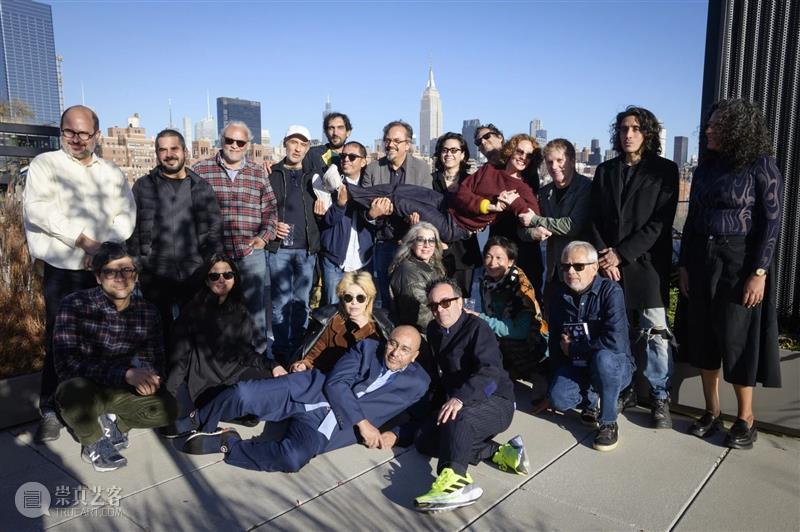
关于kurimanzutto
kurimanzutto最初源于1990年代在纽约的莫妮卡·曼祖托、何塞·库里和加布里埃尔·奥罗斯科三人的构想:在墨西哥城建立一个画廊,以支持那里的艺术家,培育一个充满活力的社区,并构建与国际艺术群体的联系与合作。最初,画廊的地点游牧不定,总是根据具体项目所需要的空间来调整展厅的形态。在建立20多年后,kurimanzutto现在代理了37位墨西哥和国际艺术家,并在墨西哥城和纽约的双空间中举办展览。今天,kurimanzutto将继续以同样的友爱精神运作下去:关注艺术家与他们的创造力是我们的最高使命。
20多年来,画廊一直致力于与不同背景、不同学科的艺术家合作,如阿夫拉姆·克鲁斯比列加斯、密涅瓦·奎瓦斯、卡洛斯·阿莫拉莱斯、达米安·奥尔特加、丹尼尔·古斯曼、废疤医生、加布里埃尔·库里、加布里埃尔·奥罗斯科、吉米·德拉姆、玛丽安娜·卡斯蒂略·德瓦尔、莫妮卡·索斯诺夫斯卡和里克尔·提拉瓦尼。多年来,画廊也与多位国际艺术家建立了牢固亲密的关系,包括奈里·巴格拉米扬、阿德里安·维拉尔·罗哈斯、傅丹、亚历山德拉·巴赫蔡奇斯、阿彼察邦·威拉社他恭、加布里埃尔·谢拉、梁慧圭、莱昂诺尔·安图内斯、罗曼·翁达克和塔里克·阿图伊。最近,画廊的艺术家名录又得到了扩充,芭芭拉·桑切斯–卡内、罗伯托·希尔·德·蒙特斯、奥斯卡·穆里略和佩特里特·哈利拉杰加入了kurimanzutto大家庭。
more about kurimanzutto:
kurimanzutto was first conceived in New York in the late 1990s by Mónica Manzutto, José Kuri and Gabriel Orozco. They imagined a gallery in Mexico City that would champion contemporary local artists, fostering a dynamic community while cultivating international relationships. At first, the gallery existed nomadically, adapting its form to the spaces needed by specific projects. More than two decades later, the gallery represents 37 Mexican and international artists, and hosts exhibitions in spaces in Mexico City and New York. Today, kurimanzutto continues to operate in the same spirit of camaraderie: focusing on artists and their creativity above all else.
For more than 20 years, the gallery has endeavored to collaborate with artists working in multiple disciplines from diverse backgrounds such as Abraham Cruzvillegas, Minerva Cuevas, Carlos Amorales, Damián Ortega, Daniel Guzmán, Dr. Lakra, Gabriel Kuri, Gabriel Orozco, Jimmie Durham, Mariana Castillo Deball, Monika Sosnowska and Rirkrit Tiravanija. The gallery has formed strong relationships throughout the years with international artists including Nairy Baghramian, Adrián Villar Rojas, Danh Vo, Alexandra Bachzetsis, Apichatpong Weerasethakul, Gabriel Sierra, Haegue Yang, Leonor Antunes, Roman Ondak and Tarek Atoui. Most recently, the gallery expanded its artist roster to include Bárbara Sánchez-Kane, Roberto Gil de Montes, Oscar Murillo and Petrit Halilaj.
mexico 墨西哥城
gob. rafael rebollar 94
col. san miguel chapultepec
11850, mexico city
tel. +52 55 52 56 24 08
info@kurimanzutto.com
new york 纽约
520 w 20th street
10011, new york city
tel. +1 212 933 4470
newyork@kurimanzutto.com
有关kurimanzutto的更多信息,请访问我们的网站kurimanzutto.com,持续关注我们的微信公众号,并在各种社交媒体通过@kurimanzutto和#kurimanzutto与我们互动!
For more information on kurimanzutto, please visit us at kurimanzutto.com, and connect with us on social media via @kurimanzutto and #kurimanzutto.




已展示全部
更多功能等你开启...





 分享
分享